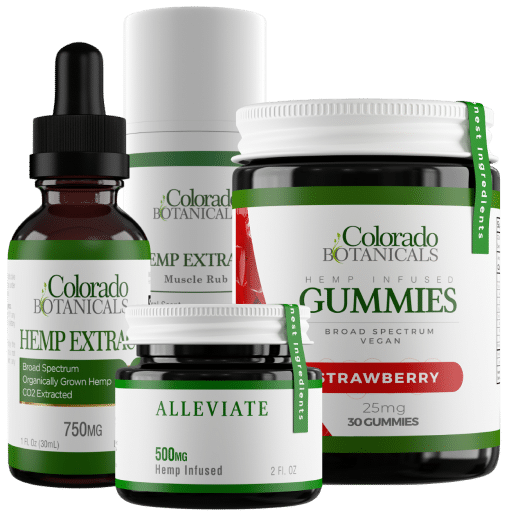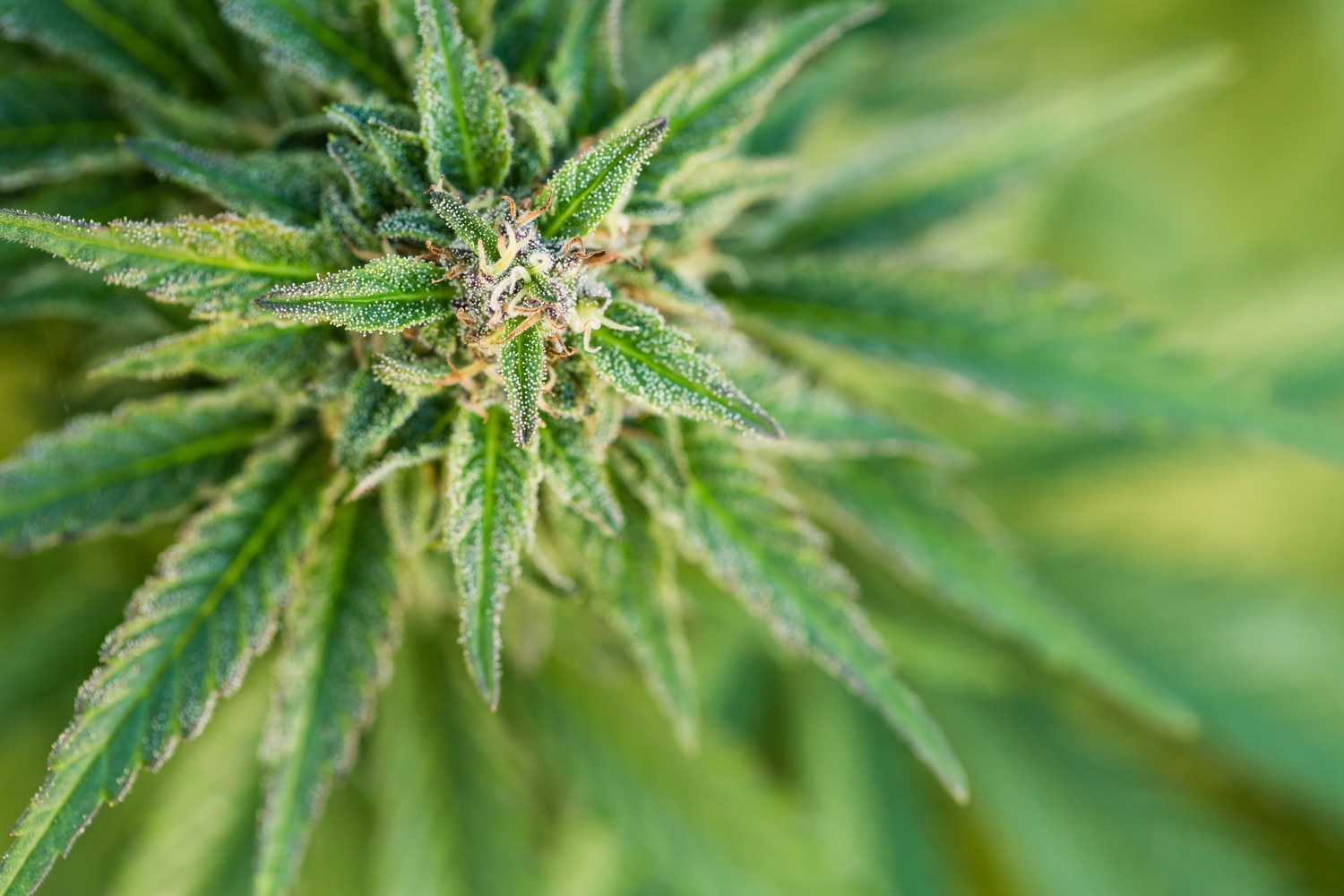Cannabichromene (CBC), a cannabinoid found in hemp, isn’t a term most of us know. With CBD becoming the focus of consumers and researchers alike, over 100 other cannabinoids are nearly unnoticed.
Make no mistake, though, CBD doesn’t stand alone. Your broad-spectrum or full-spectrum CBD extract wouldn’t be the same without other similar molecules helping fuel the “entourage effect.”
While our understanding of CBC isn’t half as deep as its more famous counterpart, there are many possible uses that could support your overall health.
So what is CBC, and why is it important? What are the benefits of CBC? Does CBC get you high? What does CBC feel like? Let’s take a deeper look at CBC and how it might help you.
What is CBC?
Discovered in 1966 – over two decades after CBD – by researchers Y. Gaoni and Raphael Mechoulam, cannabichromene is the third most common cannabinoid in any variety of cannabis, beaten only by THC and CBD.
However, “most common” is a relative term here. CBC composes less than 1% of a Cannabis sativa L. plant’s total mass. One 2017 Publication by notable cannabis researcher Ethan Russo cites CBC content at around 0.3%. Still, that tiny fraction makes a difference – more on that later.
Unfortunately, you won’t find CBC hemp flower anytime soon, as no known efforts exist to selectively breed high-CBC cannabis. Regardless, CBC extracts are popping up from select vendors.
But if CBC is so uncommon, how do a few hemp CBD manufacturers manage to extract and sell it? Because despite CBC’s concentration being under 1% by dry weight, a 1975 study by Hadley, Hawley, and Turner revealed that CBC composed up to 64% of their hemp sample’s total cannabinoid profile.
In other words, there’s no shortage of CBC in any form of cannabis.
What Does CBC Do?
CBC and CBD share a lot in common. For instance, CBC isn’t going to make you high. Like CBD, CBC doesn’t bind well to either the CB1 or CB2 endocannabinoid receptors.
The exact mechanism needs further research, but based on Ethan Russo’s paper above, CBC activates several vanilloid (TRPV) and transient ankyrin (TRPA) receptors. When CBC works with these pathways, it triggers the uptake of anandamide, an endocannabinoid with a similar chemical structure to THC.
Anandamide binds to both endocannabinoid receptors. Although CBC itself has no affinity for either CB1 or CB2, it manages to act on them through this indirect process. But does CBC’s role stop there?
Not even remotely.
CBC Works With Other Cannabinoids
 CBC may not get along well with the endocannabinoid receptors. Still, it has plenty of other molecules and compounds to work with.
CBC may not get along well with the endocannabinoid receptors. Still, it has plenty of other molecules and compounds to work with.
It’s pretty much impossible to discuss cannabinoids and their effects without mentioning the well-established “entourage effect.” This synergistic relationship allows cannabinoids and oily plant compounds called terpenes to supplement each other.
We’ll cover the specifics next, but CBC is an invaluable addition to any CBD extract. Its effects and benefits are virtually identical to CBD (and THC to some extent). If your product has a healthy helping of CBC, you can expect much better results.
To take advantage of the entourage effect, try a THC-free broad-spectrum CBD extract like this best-seller from Colorado Botanicals. Their natural terpene and cannabinoid retention process means the extract is packed with other essential compounds, like CBC.
What Are The Benefits of CBC
We understand what CBC is and how it works. But what does that mean for you? Time to look at cannabichromene’s possible benefits.
Before we dive in, remember that research into CBC is preliminary and not very abundant. The following benefits are possible, but we need more studies to confirm.
Pain Control
There’s a growing body of evidence that CBC could have analgesic properties. It’s not surprising, though, since we know CBC activates the TRPV and TRPA receptors, which are linked to pain perception, among other things.
Researchers from a 2017 study published in the U.S. National Library of Medicine noticed how CBC could “potently desensitize” TRPA1. The results confirmed their hypothesis that CBC can reduce pain through these channels.
Anandamide also plays a crucial role in pain regulation, improving CBC’s ability to relieve aching and soreness.
Anti-Inflammation
Preliminary animal studies show promise for CBC as an anti-inflammatory. CBC reduces inflammation for the same reason it helps with pain.
One 2019 study from Frontiers in Oncology addresses the TRPV1 receptor’s multiple roles, including inflammation.
The study noted a potential effect against various inflammation-related issues, like asthma, inflammatory bowel disease (IBS), and rheumatoid arthritis.
Anandamide also plays a role, according to a 2012 experiment published in the National Library of Medicine. The researchers tested anandamide’s effects on rats with periodontitis – inflammation of the gums often caused by poor oral hygiene.
Ultimately, the endocannabinoid helped reduce the rats’ inflammatory response.
Brain Protection
Many cannabinoids are known to have neuroprotective properties, and CBC is no exception. There isn’t much research yet, but one 2013 study by Di Marzo and Shinjyo noted that CBC improved the performance of neural stem progenitor cells. Also known as NSPCs, these cells are are vital in helping maintain homeostasis (internal balance) within the brain.
As a result, CBC helps NSPCs fight things like inflammation and oxidative stress. These neuroprotective properties could go a long way in preventing degenerative brain diseases like Alzheimer’s.
Mood Support
Depression is something we all experience at some point. In many cases, however, this symptom becomes chronic. Conventional treatments aren’t always effective.
Many people use CBD for this very issue. However, CBC may also have antidepressant properties.
Alfy et al. published a study in 2010 where they subjected rats to stress tests. Rats who received CBC fared better than those without.
Anandamide is also essential here. As we know, CBC triggers anandamide uptake. The endocannabinoid’s role in mood support is well-established, with it referred to as “the bliss molecule.”
How Does CBC Feel?
If you’re curious about CBC, chances are you want to know how it feels to consume CBC. Given how rare the product is, you won’t find the same amount of anecdotal evidence we see from CBD users.
Like CBD, CBC definitely won’t get you high. Aside from that, the effects are very similar to CBD, which you can read about in our article.
Based on what we know so far, CBC could help with mood support, so you may feel less affected by stress. Odds are you’ll also notice relaxation and – if applicable – reduced pain.
However, experts don’t know much about how CBC feels with so little research and no mass feedback. All we can do is make an educated guess.
How Do I Take CBC?
Cannabichromene products are trickling into the market, so it’s possible to purchase CBC oil tinctures. As usual, take a premeasured amount under the tongue, then swallow. The issue is whether we need a product like this.
CBC is essential, but as part of a larger effect with other cannabinoids. Taking CBC on its own limits its potential as a player in the entourage effect.
It’s much better to get a THC-free broad-spectrum CBD oil like the premium line offered by Colorado Botanicals. These products are naturally rich in CBC, along with several other cannabinoids and terpenes.
With CBC extracts being so new, it’s best to avoid these products until we know they’re practical, safe, or worth the investment.
Does CBC Have Side Effects?
Sorry to sound like a broken record, but we simply don’t know. Again, CBC extracts are barely available, so they haven’t caught the eyes of researchers or consumers. Without customer testimony or controlled studies on humans, we can’t say whether CBC can have side effects.
Where does CBC Come From?
CBC comes from the Cannabis sativa L. plant. Depending on THC content, lawmakers call it “hemp” (less than 0.3% THC) or “marijuana” (over 0.3% THC). Ultimately, you can extract it from either variety.
However, CBC levels decrease when the plant contains more THC. Consequently, CBC isn’t nearly as prominent in cannabis considered to be “marijuana.” That’s why industrial hemp – with its limit of 0.3% THC by dry weight – is the best option for sourcing CBC.
Conclusion: What is CBC?
Ironically, CBC seems to provide more questions than answers. We know CBC is a common cannabinoid and also have some preliminary ideas about its potential.
At the moment, CBC products are pretty niche, but if CBD taught us anything, it’s that the industry can shift fast. If these extracts take off, they might get more attention from experts.
But until we learn more, most of cannabichromene’s secrets will stay hidden. Meanwhile, your best source of CBC is in a natural, cannabinoid-rich broad-spectrum or full-spectrum CBD oil.









